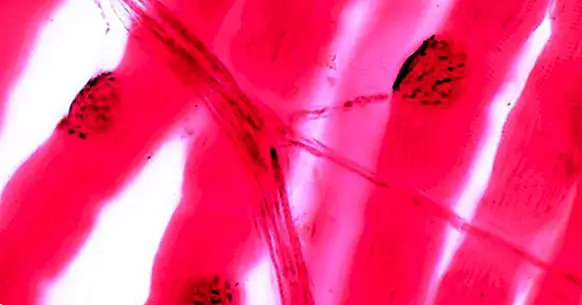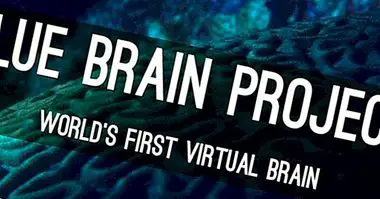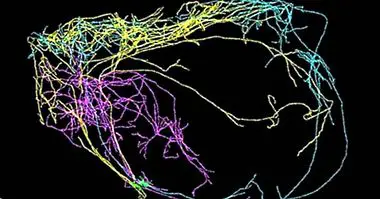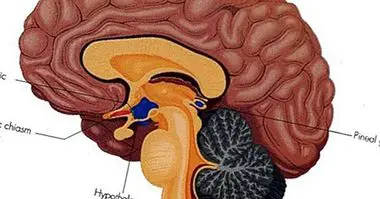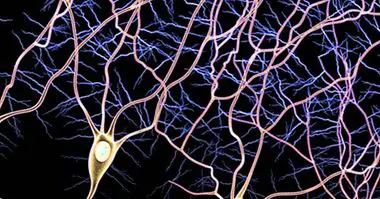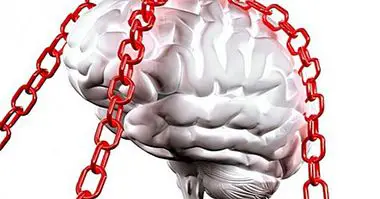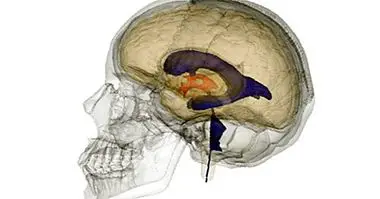Neuromuscular junction: the bridge between neuron and muscle
Something in appearance as simple as moving a hand or a foot may not seem like much, but the truth is that to be able to make the slightest movement is necessary to start a large number of processes, ranging from the planning of the movement to its realization and that require the involvement of much of the central nervous system.
The last step that follows the nerve impulse in order to produce a movement is to transmit the information sent by the neurons to the muscle, a fact that occurs in the so-called neuromuscular plate or union . In this article we will see and analyze briefly what this board is and how it works.
- Related article: "Parts of the Nervous System: functions and anatomical structures"
Neuromuscular junction: definition and main elements
We understand by neuromuscular plate the connection established between muscle fibers (generally skeletal) and neurons that innervate them
Also known as neuromuscular junction , the neuromuscular plate is not a single structure but is considered as such to the union of various elements that make up a functional unit. Within these elements, three major defined parts stand out.
First of all we found the motor neuron , from the spinal cord, through which information and bioelectrical signals from the nervous system will arrive.
The second great element is the muscular union, formed by one or several muscle fibers whose membrane or sarcolemma has receptors that are affected by different substances and that will react to the neuronal signal contracting . Finally, among them we find the synaptic space, through which the substances secreted by the motor neuron will travel to the muscle in order to stimulate it.
In this union the main neurotransmitter involved, which causes the receptors of the muscular plate to be activated in such a way that the muscles contract, is acetylcholine. Its main receptors are muscarinic and nicotinic, the latter being the most frequent in the neuromuscular junction.
Basic operation: muscle contraction
The process by which a muscle contracts or relaxes, once at the neuromuscular plate level, is the one that follows. First, the nerve impulse that has traveled through the nervous system to the motor neuron reaches the terminal buttons of the axon of this .
Once there, the electrical signal generates the activation of voltage-dependent calcium channels, said calcium entering the neuron and allowing the exocytosis to release and secrete acetylcholine into the synaptic space.
This acetylcholine will be captured by the nicotinic receptors present in the muscle fiber sarcolemma, which in turn generates the opening of ion channels. Through these channels a large amount of sodium ions enters the muscular membrane, ** which generate a depolarization in the membrane ** that ultimately will cause the muscle cells to open channels for calcium.
This calcium allows the activation of proteins that are part of the muscles , such as actin and myosin, which move one over another (actin slides on the myosin) causing muscle contraction.
- You may be interested: "What is neuronal depolarization and how does it work?"
Disorders and problems derived from alterations in the neuromuscular plate
The process that the muscles follow to contract and relax is fundamental when allowing movement to the organism. However, sometimes we may find that the neuromuscular plate may be damaged or affected by different circumstances, generating different difficulties in motor control . Some of the main disorders derived from this fact are the following.
1. Myasthenia Gravis
Myasthenia is a disorder in which the immune system attacks the neuromuscular junction, generating an inflammation of the postsynaptic acetylcholine receptors.
Its main symptom is the presence of muscle weakness that greatly hinders the possibility of making movements, also decreasing the ability to contract muscles and the strength with which this is done. This disorder affects all types of muscles, may affect the ability to chew or even breathe . Movement capacity worsens with physical activity.
2. Botulism
Another relevant disorder in which the symptoms are largely due to problems in the neuromuscular plaque is botulism. In this disease an alteration due to the presence of botulinum toxin is generated (which is usually introduced into the body through the consumption of food in poor condition) that prevents acetylcholine from adhering to other substances that allow its excretion from the presynaptic membrane.
In this way, Acetylcholine can not leave, which prevents its action on the muscle . The symptoms of this disease are the progressive weakening of the muscles of the body, generally in the face-caudal direction. It can cause death if it is not treated in time.
3. Lambert-Eaton syndrome
A disease in which the immune system affects the calcium pathways present in the motor neurons. This causes blockage and difficulty in the emission of acetylcholine in the synaptic space, which ends up generating a high level of muscle fatigue and weakness both voluntary and neurovegetative. The level of strength improves with physical activity , and alterations such as hypotension may appear.
4. Paraneoplastic syndromes
Other disorders linked to the neuromuscular junction (although in this case it is not something specific to it) are found among some of the paraneoplastic syndromes, a set of disorders derived from the presence of some type of cancer. The presence of tumor cells it can cause the components of the neuromuscular junction to degenerate and die, causing a weakening of the ability to use the muscles. Among them, necrotizing myopathy stands out.
Bibliographic references:
- Díaz-Manera J, Rojas R, Illa I. (2008). Disorders of the neuromuscular junction. In: Pascual J (Ed), Treaty of Clinical Neurology, (pp 879-909). Barcelona: Ars Medica.
- Rodríguez, J. & Pedroza, A. (2013). Diseases of the neuromuscular plate. University of Rosario.
- Rosich-Estragó, M. (2000). Paraneoplastic diseases of motor and muscle plate. Rev. Neurol., 31: 1225-1228.
- Sanders, D & Howard, J (2011). Disorders of Neuromuscular Transmission; In Bradley, W. (2011). Neurology in Clinical Practice, Chapter 82.

